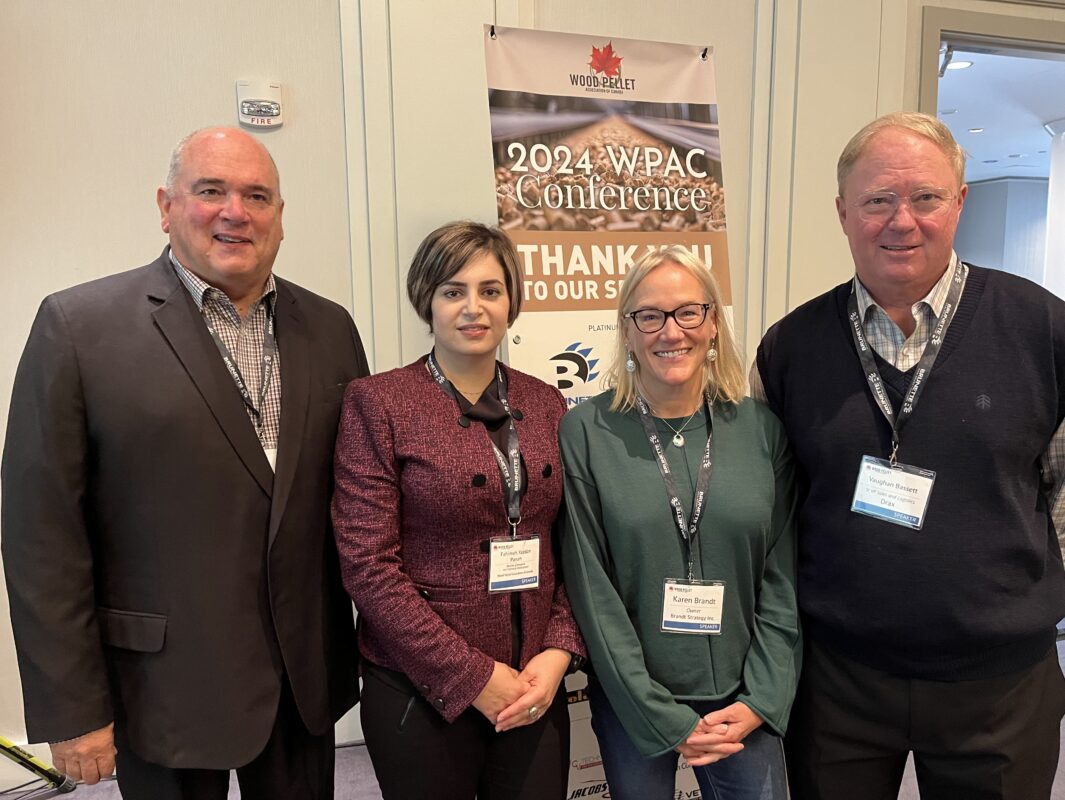Can Canada’s forest sector — from its woodlot owners to pellet producers, and the consumers in between — get back to being proud of what it does?
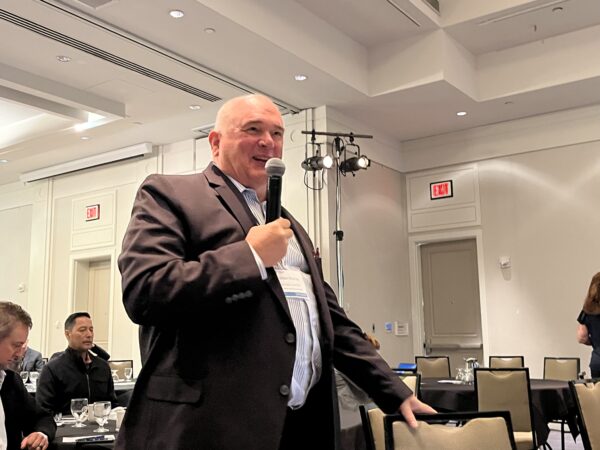
It’s a question hundreds of forest sector insiders considered as they gathered for the Wood Pellet Association of Canada’s much-loved annual conference mid-September in Victoria, B.C.
Industry drivers, such as Drax’s Vaughan Basset, equipment leaders, such as David Dubios of Fink Machine Inc., and top market analysts, such as FutureMetrics’s Bill Strauss, and Argus Media’s Robbie Webster Junior and Hannah Adler, came together to discuss what’s next for the industry.
“All forest fiber is important, and we shouldn’t waste it,” said WPAC head Gordon Murray as the conference kicked off.
While the conference’s major goal set to outline the future role of biomass in electrification, attendees also seemed keen to come together and reaffirm their commitment to the health of Canada’s forests and climate-friendly action.
“How many people in this room have felt personally attacked for being a forester or associated with the forest industry?” asked Joe Nemeth, GM for the B.C. Pulp and Paper Coalition, speaking to public opinion the sector is bad for Canada’s forests.
“When I first started in the forest sector it was a source of pride. I bragged about being in forestry.”
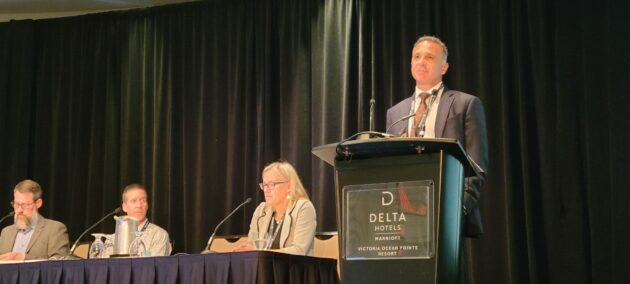
Nemeth shared details of his recent two-week trip to Finland, spent learning how the country handles and thinks about its forests.
He said Finland is focused on “offence, not defence.”
The country’s foresters actively manage their forests before harvest by removing brush, to reduce wildfire risk, and thinning weak and dead trees, to promote best growth, create regular biomass supply, and ensure sustainable economic value.
“They truly actively manage their forests and it’s very successful,” said Nemeth, adding the country claims 100%-forest use, including wood chips and bark heading to pulp and paper mills, and pellet plants, but also to biomass-fired energy systems “in every single town.”
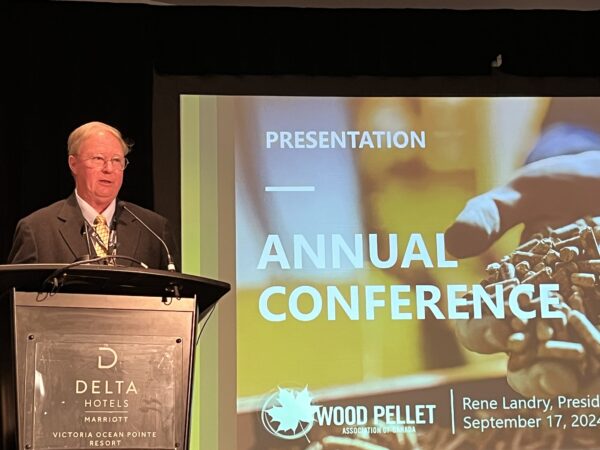
Nemeth said Canada mostly cuts saw logs and gets to about 45% to 50% utilization of forest resources, even after forest waste is sent off.
He said Canada needs to take a page from Finland’s book, where the forest sector is a source of pride, both for the public and government.
As Vaughan Bassett, former president of WPAC pointed out in his presentation, Canada has more work to do to improve better utilization of forest residuals, reduce fire risk and provide more heating and energy options for Canadians.
Reestablishing pride, garnering public and government support, synergising policy locally and internationally, and fostering a better understanding the role active forest management, and by extension bioenergy, can play in mitigating the climate crisis were key takeaways from the conference.

Bill Strauss, president and founder of FutureMetrics, kicked off his presentation with a nod to the reason the biomass industry exists; rising global carbon emissions and climate change.
He said fossil fuels won’t last forever, the severity of climate disasters are worsening as a result of global emissions, and the need for electricity is increasing, fuelled by the rapid, world-wide transition to electric vehicles, growth of data centres and artificial intelligence, and heat pumps.
The world needs to transition to decarbonized electricity now, but energy storage capacity to support variable wind and solar energy is decades away, Strauss said.
That’s where sustainably sourced biomass comes in to support baseload and load-following power generation by replacing coal power plants.
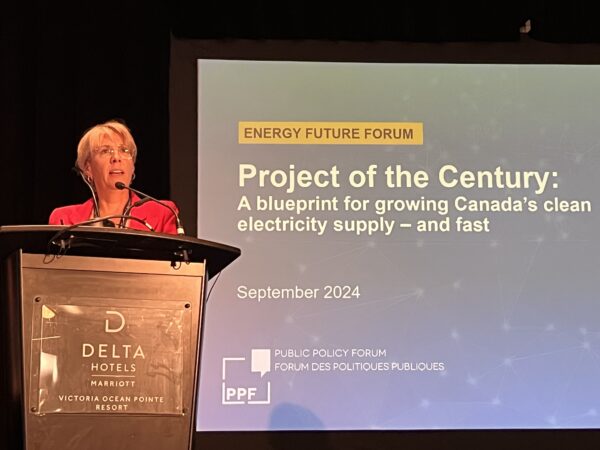
“There’s going to be those moments where you still need somebody to spin up the turbine and make power keep the lights on,” said Strauss.
“That’s where this industry makes so much sense.”
Janet Annesley, chief sustainability officer with energy transition company Kiwetinohk Energy Corporation, and fellow for the Public Policy Forum, said here at home Canada has to grow its clean electricity grid by two to three times.
“We have a lot of the technical solutions…In the immediate time we can reduce emissions because there’s a lot of safe bets, and wood pellets are one of them,” said Annesley.
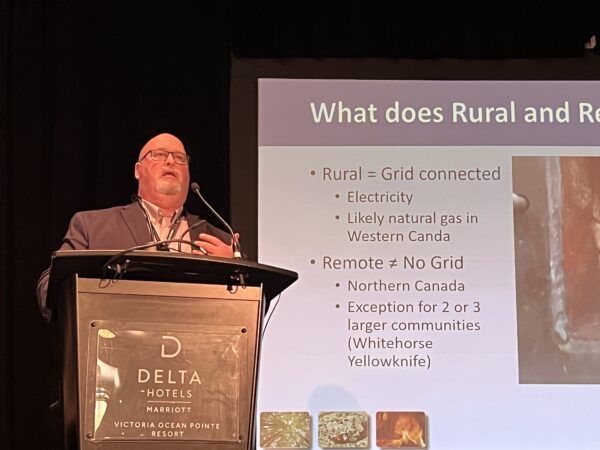
David Dubois, business development manager for Fink Machine Inc., spoke to the applications of biomass boilers in remote communities, not just for the larger grid.
He noted many remote communities are looking to get away from diesel, and the risk of oil spills. They’re switching to solar, but don’t have the capital to invest in storage capacity and biomass heat and power generation can fill that gap.
It seems the collaboration of clean renewable energy, paired with low-carbon, net-zero bioenergy, is where the solution to stemming the tide of climate change lies.
This article was originally published in Canadian Biomass.

